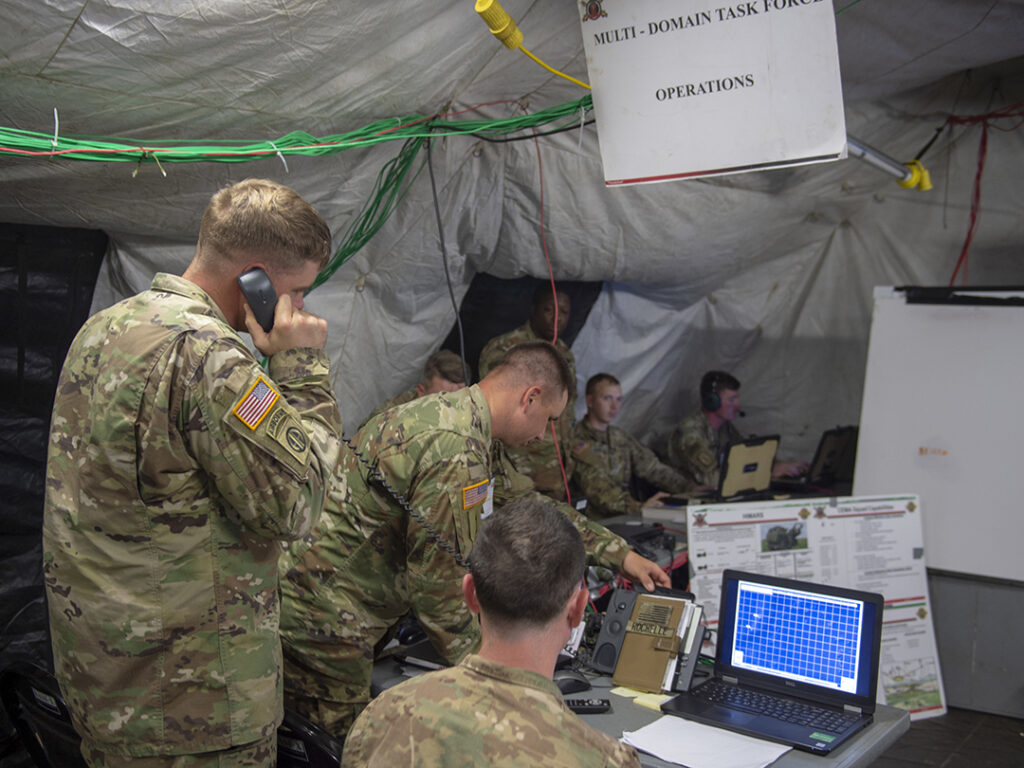THE WATCH STAFF
The U.S. Army is poised to deliver “tactical cloud” capability in 2022 as the service modernizes its information networks — part of a digital strategy to dominate the information battlespace in future conflicts.
The tactical cloud would allow the Army to get data to Soldiers quickly and more effectively. Rather than sending it from the field to a centralized data center for processing — a time-consuming process — the Army would leverage the cloud to process the data where it is generated, according to a July 29, 2019, story by defense technology website C4ISRNET.
The cloud would be for the Army’s two Multi-Domain Task Forces (MDTF), according to a December 15, 2021, story in the digital magazine Breaking Defense.
The new capability comes as the Army works to unify its enterprise and tactical networks to prepare for the multi-domain battlefield, allowing for better situational awareness, according to Breaking Defense.
The Army says that to address potential threats to U.S. national security posed by a resurgent Russia and the People’s Republic of China, it must have the capability to operate in a multi-domain — air, land, water, space, cyber, information — environment by 2028. To accomplish that mission requires “new operational concepts, technologies, weapons and units,” according to a November 5 report by the Congressional Research Service (CRS). The MDTF is the “organizational centerpiece” of such an effort.
In all, the Army has plans for five MDTFs: two aligned to the Indo-Pacific region, one aligned to Europe, one stationed in the Arctic region and oriented on multiple threats, and a fifth aligned for global response, according to the CRS report.
(Pictured: The U.S. Army’s Multi-Domain Task Force operates at the Valiant Shield 2018 exercise.)
“As we go into our next fight, whatever it is, it will be against an adversary who can contest us and will cause periods of degraded communication,” Lt. Gen. John Morrison, deputy chief of staff for the G6, told Breaking Defense. “And so it really comes down to where do you have to have the data? Where do you need to have compute and storage so that when you are operating in that degraded environment, you’re able to still conduct operations?
“If we just do everything in the cloud, if a unit was to get cut off and not have connectivity back to the cloud, wherever it is, then obviously, they become mission ineffective,” Morrison said. “We’ve got to find that right balance that allows us to really take the power of the cloud … and apply them at the point of need.”
Morrison said the Army decided in the past two months to anchor the service’s mission data and cloud efforts to the Multi-Domain Task Forces, according to Breaking Defense. The service has also identified a series of exercises to develop those capabilities over the next two years, Morrison said.
The Army paved the way for its information technology modernization in 2021 when it released its Unified Network Plan and its broader Digital Modernization Strategy, Breaking Defense reported. The tactical cloud is a key piece of the Unified Network Plan.
“That’s going to put pressure on what we need to do from a unified network perspective so we can provide that secure highway with the right guardrails,” Morrison said. “That synchronization is going to be absolutely critical.”
IMAGE CREDIT: PETTY OFFICER 1ST CLASS DANICA M. SIRMANS/U.S. NAVY

